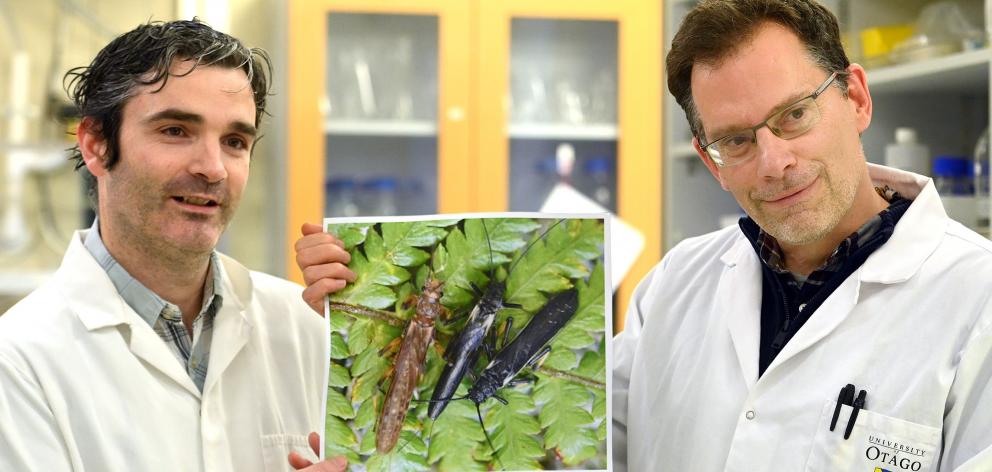
University of Otago researchers have discovered many native New Zealand stoneflies (Zelandoperla fenestrata) are mimicking their highly toxic cyanide-producing cousins (Austroperla cyrene) to avoid being eaten by predators.
Lead author and zoology researcher Dr Brodie Foster said in nature, poisonous species typically advertised their toxicity, often by producing high-contrast colours such as black, white and yellow — such as wasps and bees.
Along similar lines, A. cyrene stoneflies produced strong warning colours of black, white and yellow, to highlight their threat to potential predators.
Researchers had discovered the unrelated, non-toxic Z. fenestrata stoneflies had been cheating death by mimicking the appearance of A. cyrene, Dr Foster said.
"In the wild, birds will struggle to notice the difference between the poisonous and non-poisonous species, and so will likely avoid both.
"To the untrained eye, the poisonous species and its mimics are almost impossible to distinguish," he said.
The researchers used genomic approaches to reveal a key genetic mutation in a coloration gene which distinguishes "cheats and non-cheats".
This genetic variation allowed the cheating species to use different strategies in different regions, he said.
Co-author Dr Graham McCulloch said the strategy, known as Batesian mimicry, was possibly caused by environmental change, which was driving rapid evolutionary shifts in New Zealand’s native species.
Co-author Prof Jon Waters said
their findings indicated the cheating strategy did not pay in regions where the poisonous species was rare.
"If the cheats start to outnumber the poisonous species, then predators will wake up to this very quickly — it’s a bit of a balancing act."












